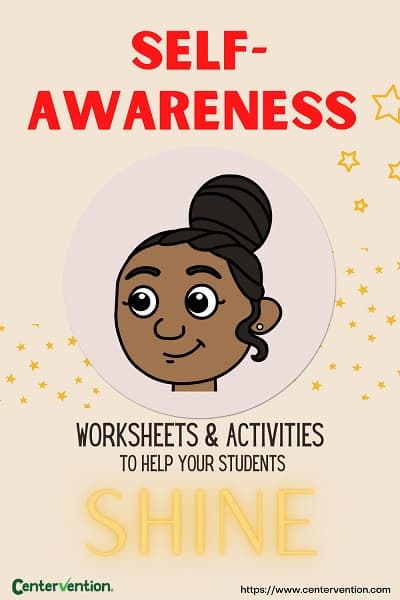Using the self awareness worksheets below, your students will gain a better understanding of their likes and dislikes.
While adults may be more familiar with their own strengths, challenges, and emotions, students’ self-awareness is still in early development throughout the school-age years. Lessons that focus on naming, recognizing, and managing emotions, exploring strengths, setting goals, and sharing likes and dislikes with others through appropriate communication can boost self-awareness.
Expert author Daniel Goleman explains: “Emotional Self-Awareness is the ability to understand your own emotions and their effects on your performance. You know what you are feeling and why—and how it helps or hurts what you are trying to do. You sense how others see you and so align your self-image with a larger reality. You have an accurate sense of your strengths and limitations, which gives you a realistic self-confidence. It also gives you clarity on your values and sense of purpose, so you can be more decisive when you set a course of action.”
Truly, when we help students uncover this awareness, we set them up for success in all areas of life!
Recommended Grade Level: Elementary and Middle
SEL Skill(s): Social Initiation
Duration: 30 minutes
Materials: Just Like Me Cards (print one for each group of four students)
Instructions for Self Awareness Worksheets
Have students sit in a circle to play a game. Say, “I am going to read a statement. If this is something you enjoy, stand up and say Just Like Me.”
Read the following statements:
- I like hot dogs.
- I think vanilla is better than chocolate.
- I think cats are the best pet.
- I would rather stay up late than wake up early.
- I like the school spaghetti.
- I would rather ride a bike than roller skate.
- I think watching TV is more fun than playing video games.
- I would rather paint than use clay.
You can add or substitute statements that are more appropriate to your students’ age and interests.
After the game ask, “What did you notice? What surprised you?”
Allow students to answer then say, “It’s fun to think about the things we enjoy and it can be a surprise to learn shares our interests.”
Play: Break the class into groups and distribute Just Like Me Cards. Tell students that they should look through the pictures of the objects, think about what each is used for as well as a word that describes it. Next, students should each choose an object whose attribute they feel is just like them. Say, “For example, if you saw a picture of a hammer you might say A hammer is used to build things. A hammer is strong. Just like me. I am strong!”
Allow 10 minutes for groups to discuss the cards.
It may be helpful to circulate and support younger students if they have difficulty describing objects. As an alternative, you may first discuss the objects and their attributes as a whole group before breaking into smaller groups, allowing students to identify their relatable objects with peer support. Also: it’s okay if students choose the same card– that means their friends are Just Like Them!
Closure: Invite students to share which card they chose best expresses who they are. As an extension, you may choose to have them illustrate the object and label it with their name and a description (i.e. Ted is strong like a hammer!). Remind students, “It is helpful to recognize what it is that makes us our best selves and to learn more about our friends.”
